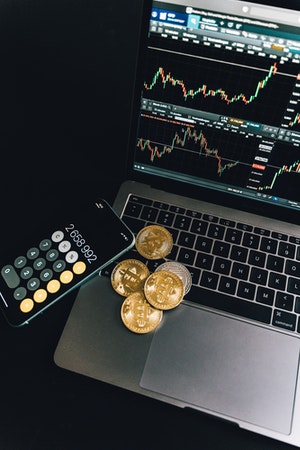Bitcoin is currently the most popular cryptocurrency in the world. It’s symbol is “₿”. It was created and launched in 2008 by someone under the name of Satoshi Nakamoto. The cryptocurrency went into real world use in 2009 as open-source blockchain software. Bitcoin was the first decentralized digital currency separate from a central authority. It can be sent directly from peer-to-peer on its own enclosed network with no intermediaries needed for transactions. Each payment and transfer is verified by a network of nodes through cryptography and recorded in a publicly shared universally distributed ledger inside its blockchain.
New bitcoins are created and rewarded during the process of validating the transactions, this is what is known as bitcoin mining. The bitcoins earned through mining can be converted to other currencies and used to purchase products and services. The price of bitcoins can be extremely volatile at times but the overall trend in its price has been higher since it started trading publicly.
Bitcoin mining is the record-keeping service completed through the use of computer processing power of nodes. Miners work to keep the blockchain record consistent, complete, and unalterable by continuously assembling new transactions into a block and broadcasting it to the total network and verifying it through recipient nodes. Each block contains a cryptographic hash of the previous block, and links to the previous block creating a chain of blocks on the ledger or blockchain.
For acceptance by the network, a new block must have a proof-of-work (PoW). The PoW requires miners to locate a number called a nonce, so that when the block content is hashed with the nonce, the resulting numerical sequence is smaller than the network’s difficulty target. This proof is easy for a node in the network to verify, but time-consuming to create. For a cryptographic hash that is secure, miners try many different nonce values before achieving the target for difficulty.
After every 2,016 blocks, the difficulty target is changed based on the network’s performance. The goal is to keep the average time between new block creation at approximately ten minutes. The system automatically changes to the amount of mining power currently on the network.
The proof-of-work system and the chaining of blocks, makes any modifications on the blockchain network difficult. A network hacker would need to modify all previous blocks in the chain to create modifications on one block to be accepted. Since new blocks are mined and added to the chain continuously, the difficulty level of modifying a block grows as time passes and the quantity of previous blocks increases.
The miner that finds the new block is permitted by the rest of the network to reward themselves both newly created bitcoins along with transaction fees. On May 11, 2020, the current reward was 6.25 newly created bitcoins per block that is successfully added to the blockchain, along with transaction fees from processed payments on that block.
Mining the first half of the supply of bitcoins took four years while the remainder will take another 120 years. An artificial process called “bitcoin halving” reduces the amount that miners are compensated with fewer and fewer bitcoins as time passes. The reward is claimed for a block processed by a transaction called a coinbase that is added to the processed payments.
All the bitcoins that currently exist have been created through the use of coinbase transactions. The original bitcoin protocol states that the reward for creating and adding a block will be halved approximately every four years after 210,000 blocks . The reward will continually decrease until it reaches zero, after the 21 million bitcoins cap limit is achieved. After the maximum bitcoins allowed is reached then the record keeping fees for miners will then be paid only in transaction fees.
To compete with other bitcoin miners can take a large capital investment in powerful computing equipment like a graphics processing unit (GPU) or an application-specific integrated circuit (ASIC). The prices of this computing equipment can can be from several hundred dollars up to tens of thousands of dollars. Some crypto miners purchase individual graphics cards as a lower-cost way to build mining operation equipment. The other big requirements of bitcoin mining computers is access to cheap and reliable electricity and a cooling system for the room the computers are in as well as the computer itself. Bitcoin mining is a professional endeavor and requires beating other nodes to solve the cryptographic puzzles to be rewarded. There can be a high barrier to entry in cost for the computing power and electricity to attempt to achieve these goals.
Nakamoto originally created a monetary policy using artificial scarcity. Bitcoin’s total market cap and float was set at inception as the total number of bitcoins would never be greater than 21 million. This fixed quantity helps maintain the value of bitcoins using a limited supply and slowly releases new bitcoins into circulation. The value of bitcoin rewarded to miners early in the process helped motivate the network and the value of the fees will continue to motivate the miners for years to come.
